Additional information
| Weight | 1 lbs |
|---|---|
| Dimensions | 4 × 4 × 4 in |
Our 2024 plant list will be available in mid-Febrary 2024. Orders will begin to ship in May - June 2024 Dismiss
$12.00
Growing in moist conditions, Eupatorium perfoliatum (Boneset) produces flat to roundish heads of white flowers. The stem is covered with long spreading hairs with leaves that are often joined at the base, appearing to surround the stem. Many different insect species are attracted to the flowers as the nectar is relatively easy to access.
Out of stock
| Weight | 1 lbs |
|---|---|
| Dimensions | 4 × 4 × 4 in |
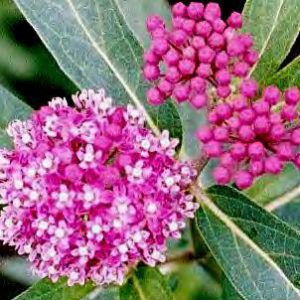
‘Cinderella’ is a cultivar of native Asclepias incarnata (Swamp Milkweed) featuring pale pink, vanilla scented flower clusters. This milkweed occurs throughout most of the United States. It is a tall plant found in moist habitats such as wet meadows, floodplains, riverbanks, pond shores, stream banks, wet woods, swamps, and marshes, although it will also grow in drier areas such as prairies, fields, and roadsides. Swamp milkweed needs full sun or partial shade to flourish. Flowers are very attractive to butterflies and bees as a nectar source. Swamp milkweed is also an important food source for the larval stage of Monarch butterflies.The plants are deer resistant and heat tolerant.
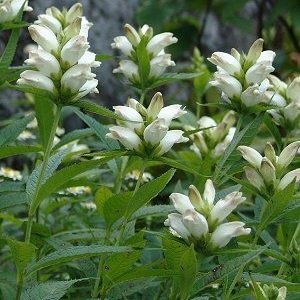
Host Plant – Baltimore Checkerspot
Spikes of elegant white flowers top shiny green foliage in late summer and early fall. Grows best in moist meadows, stream banks, and swamps. Favorite breeding site for the Baltimore Checkerspot Butterfly.
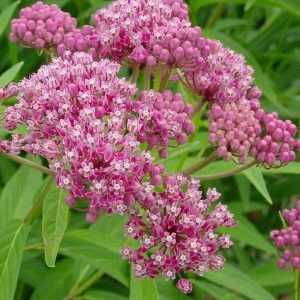
Swamp Milkweed occurs throughout most of the United States. It is a tall plant found in moist habitats such as wet meadows, floodplains, riverbanks, pond shores, stream banks, wet woods, swamps, and marshes, although it will also grow in drier areas such as prairies, fields, and roadsides. Swamp milkweed needs full sun or partial shade to flourish. Flowers are fragrant and very attractive to hummingbirds, butterflies and bees as a nectar source. Swamp milkweed is also an important food source for the larval stage of Monarch butterflies. The plants are deer resistant and heat tolerant. Also known as Rose Milkweed, Red Milkweed, and Marsh Milkweed.
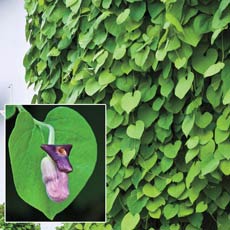
Host Plant – Pipevine Swallowtail
Culture
Easily grown in average, medium, well-drained soil in full sun to part shade. Prefers rich, moist soil. Intolerant of dry soils. Cut back in late winter to control growth. Grows well from seed.
This deciduous, woody, climbing vine is an eastern American native which typically occurs in the wild in rich, moist woods and along streams. Can rapidly grow to 20-30′. An old-fashioned favorite that is grown for its large, heart-shaped, densely overlapping leaves (6-12″ long) which can quickly cover an arbor or trellis with attractive, glossy, deep green foliage. Commonly called Dutchman’s pipe because the unusual, 2″ long, yellowish-green flowers (each flaring at the calyx mouth to form 3 brownish-purple lobes) superficially resemble Dutch smoking pipes. Although the flowers make interesting conversation pieces, they are usually hidden by the dense foliage and are somewhat inconspicuous.
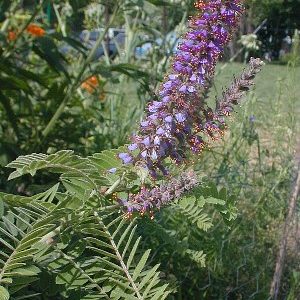
Host Plant – Silver Spotted Skipper
This is a lovely, and very long lived shrub of the prairie. The deep purple flower spikes rise above the silver-gray foliage to create a striking bloom display in June. The very deep taproot allows this plant to be very drought tolerant. Butterflies are attracted.
Available May – Mid May
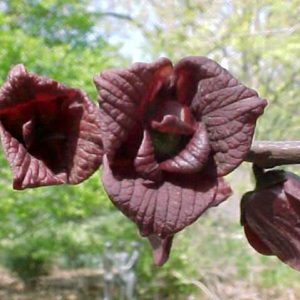
Easily grown in average, medium to wet, well-drained soil in full sun to part shade. Prefers moist, acidic, fertile soils. Will grow in shade but becomes leggy.
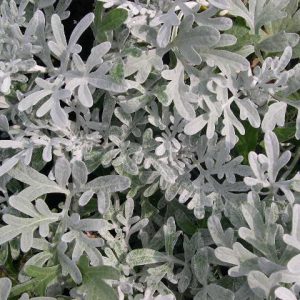
Host Plant – American Lady
Features to Note:
General Information:
Artemisia are prized for their aromatic silver leaves, excellent texture and vigorous growth. This perennial does not flower conspicuously but are used for their contrasting foliage. Also excellent in flower arrangements.
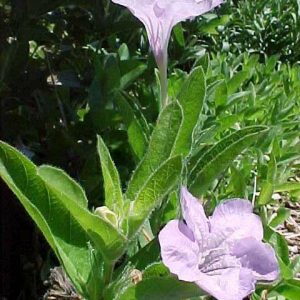
Host plant – Common Buckeye Butterfly
Wild petunia occurs in dryish soils in open woods, glades, prairies and fields throughout the State except for the far southeastern lowlands. Typically grows to 2′ tall. Features tubular, bell-shaped, petunia-like flowers (to 3″ long), each with five shallow rounded lobes. May to October bloom period. Lavender to lilac flowers appear singly or in clusters in the upper leaf axils. Oblong to lanceolate, olive green leaves to 4″ long. Leaves and stems are hairy. This plant in on threatened list in the state of Michigan.
Available for shipping mid May
